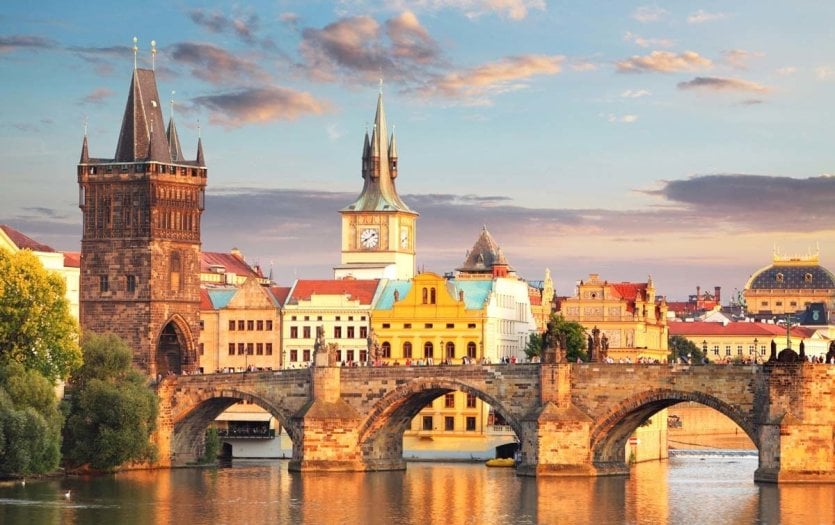
Few capitals leave you with the impression of having been bewitched rather than charmed by so much beauty and romance. Prague, a destination for a romantic get away, boasts an astonishing wealth of culture and history, which can be seen in the old stones of its palaces, bell towers and facades of many different styles. The UNESCO-listed historic center, the Charles Bridge and the Royal Castle are the city's tourist ambassadors, but a stroll around the city will lead you to many more treasures and curiosities. Let yourself be carried away by the nostalgia of Old Europe, and lend an ear to the myths and legends of the city known as the "Mother of all cities" and one of Europe's top destinations for a weekend with friends.
1. Stare Mesto
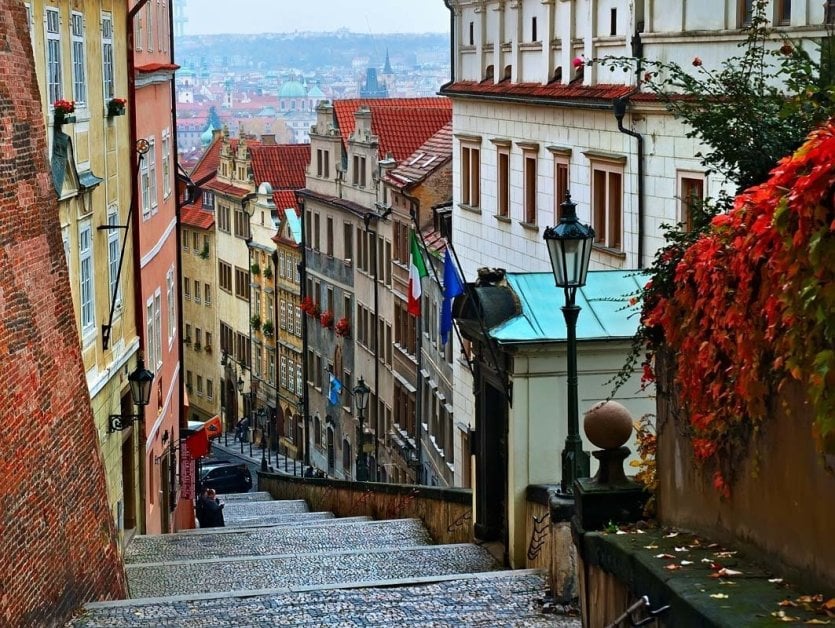
Prague's historic center, Stare Mesto is an absolutely charming district, home to some of the city's finest buildings and one of our top 20 Unesco World Heritage Sites in Europe. It still bears the scars of its medieval past in a tangle of winding alleys, now bustling with stores, cafés and restaurants. You'll love getting lost here, discovering palaces, churches and old mansions, each with a different architectural style on its facade, from Romanesque to Art Nouveau. All strolls lead to the immense Old Town Square, lined with ancestral buildings and punctuated by the incessant ballet of passers-by.
Would you like to discover what lies beneath the city of Prague? Click here to book a guided tour to discover the city's history and wander through its labyrinth of passages, chambers and corridors.
2. The Royal Castle
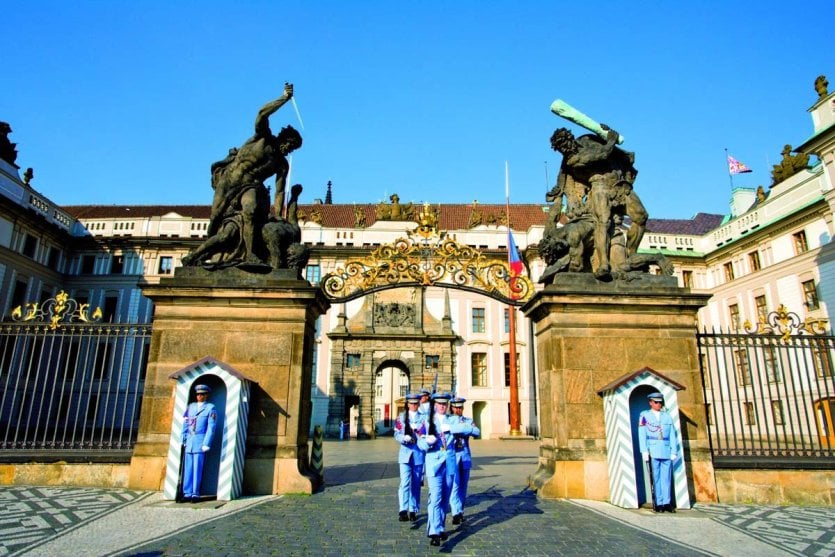
The seat of political and religious power since the 9th century, the Royal Castle is a vast complex of palaces, churches, museums, gardens and courtyards spanning almost 7 hectares. It resembles a small town, criss-crossed by alleyways including the attractive "Golden Lane" with its colorful stalls. Spend half a day visiting the Cathedral of St. Vitus, the Basilica of the Monastery of St. George, the Poudrière Tower, the Imperial Stables and the flamboyant Vladislav Hall, where presidents still take the oath of office.
Click here to book your ticket to Prague Castle and avoid the wait at the entrance!
3. Charles Bridge
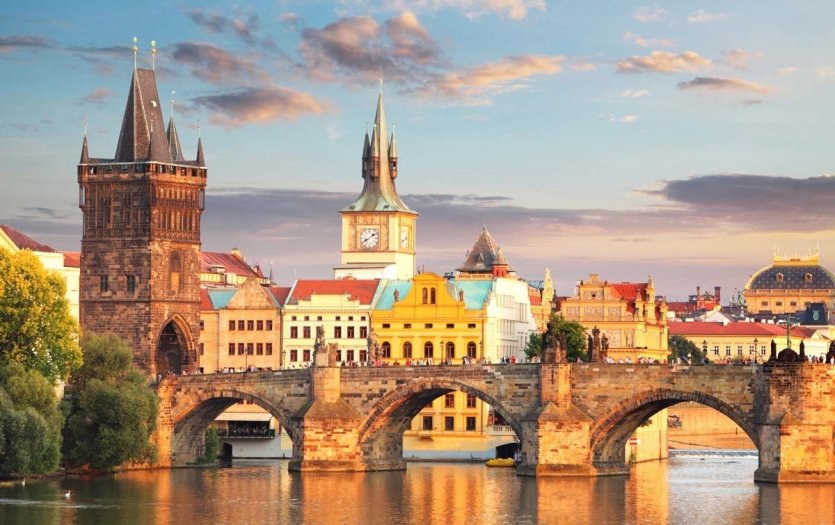
The iconic symbol of Prague, the Charles Bridge is a Gothic-Baroque architectural marvel. It was built between 1357 and 1402 at the request of Charles IV to link the Royal Castle to the Old Town by spanning the Vltava River. It boasts some thirty statues and sculptures erected between the 16th and 20th centuries, making it a veritable open-air museum. The Charles Bridge offers some of the finest views of the city, and a bohemian atmosphere enlivens its cobblestones thanks to musicians, painters and artists of all kinds.
4. Saint-Guy Cathedral
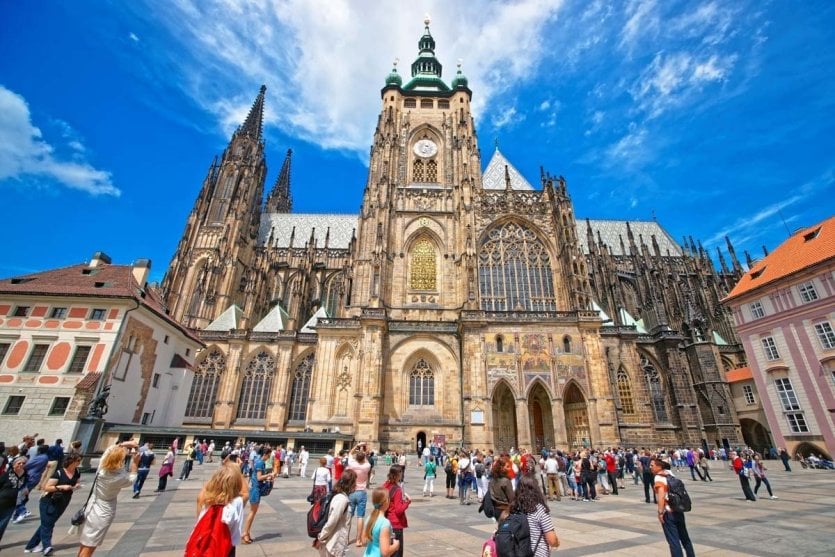
Culminating within the castle walls, Saint-Guy's Cathedral is certainly the city's most important and impressive monument. It took almost a thousand years to build this masterpiece, imposing in its size and delicate in its finery. Its portal, stained-glass windows, gem-encrusted walls, magnificent frescoes and mosaics illuminate its already skilfully sculpted Baroque drapery... a pure marvel! The cathedral houses the crown jewels, the crypt of the Bohemian kings, the tomb of Saint John Nepomuk and the remains of the mythical Wenceslas.
5. Lobkowicz Palace
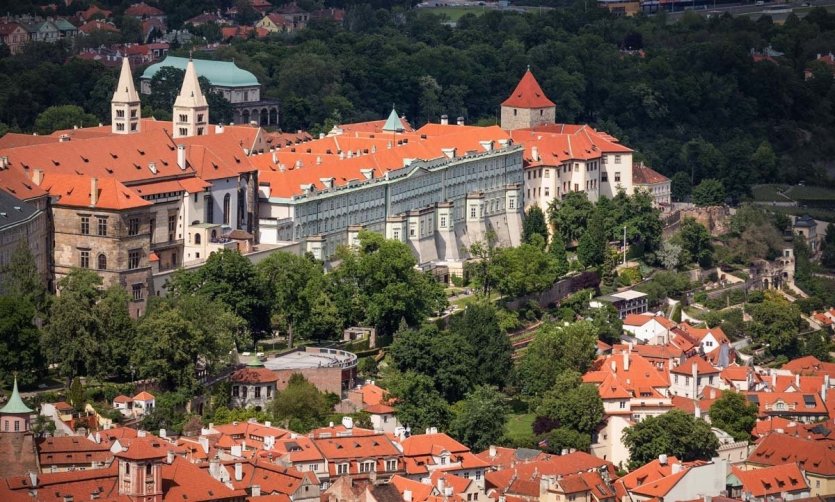
The Lobkowicz Palace is also located in the grounds of a castle, and is the only building here to be privately owned. It houses the Lobkowicz family's collection of paintings, one of the most important private collections in Europe. Works by Velázquez, Brueghel, Veronese and Rubens are on display, as well as a unique collection of musical instruments and original scores by Mozart, Handel and Haydn, including one written in Beethoven's own hand. The Palace also hosts daily chamber music concerts. Click here to book your ticketfor the Lobkowicz Palace, including audioguide
6. The Jewish quarter and cemetery
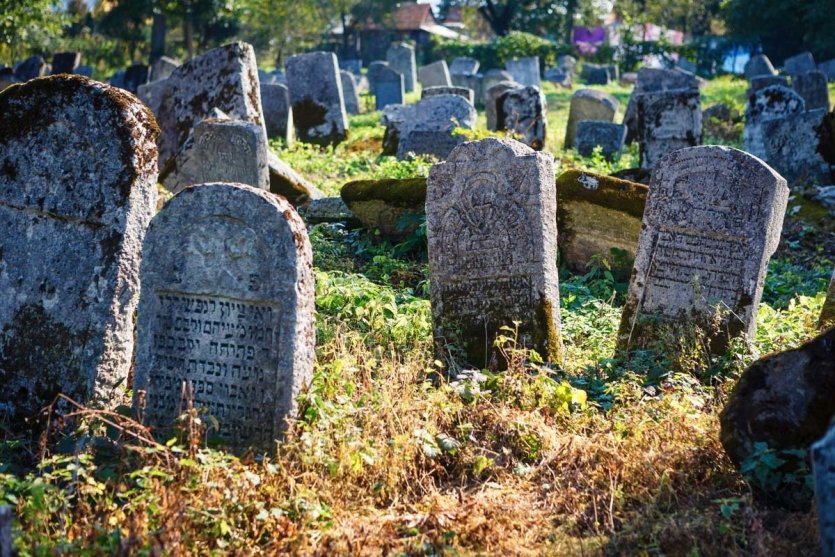
The arrival of the Jewish community in Prague dates back to the 10thcentury , so the history of the Czech capital is closely linked to that of the Ashkenazim. A visit to Joséfov, the former Jewish ghetto, which has since been razed to the ground, but where some of its legacies remain, is a good starting point. Start with a visit to the Museum of Prague Jewry, before waving goodbye to the Maisel, Klausen and Pingas synagogues , the most moving of which houses the Holocaust Memorial. Last stop: the Jewish cemetery, with its 12,000 gravestones, including that of Rabbi Löw, associated with the legend of the Golem. Explore Prague's Jewish quarter on this guided walking tour with admission to synagogues and Jewish cemetery.
7. The Astronomical Clock
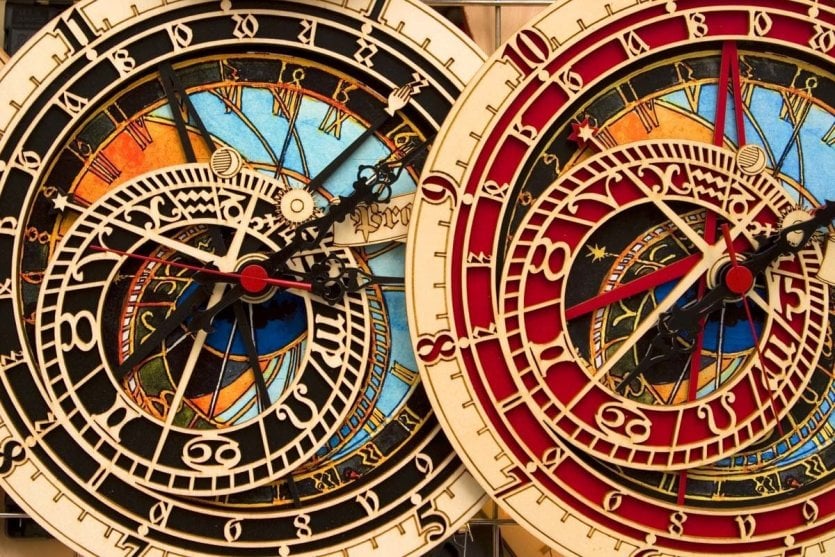
The most prominent sight in the Old Town Square! Built in the 15th century, the Astronomical Clock is a medieval masterpiece, with a mechanism and technology that were highly sophisticated for its time. It comprises 3 elements: an astronomical dial showing the time and position of the Sun and Moon, a dial with medallions representing the months, and a mechanism that triggers the hourly parade of the twelve apostles. It's also possible to climb the clock tower for a bird's-eye view of the square.
8. Strahov Monastery Library
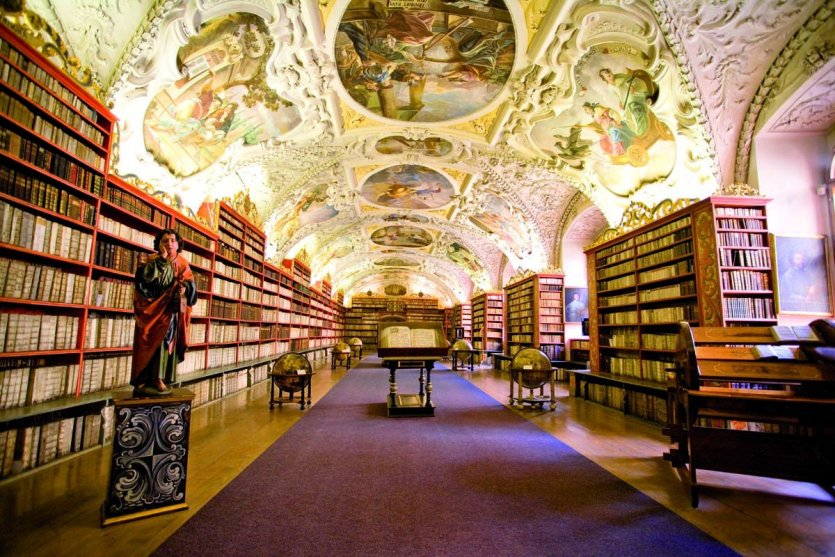
The Strahov Monastery is located high above the city and certainly boasts some of the most beautiful views. But it is for its magnificent Baroque and neoclassical interiors that it is so highly prized, not least for its historic library. Its rooms are topped by sculpted ceilings decorated with frescoes, which watch over a collection of 200,000 books. Books and manuscripts from the Middle Ages are carefully preserved, including the 9th-century Strahov Gospel. Don't miss the strange cabinet of curiosities in the corridor leading to the library.
9. Wenceslas Square
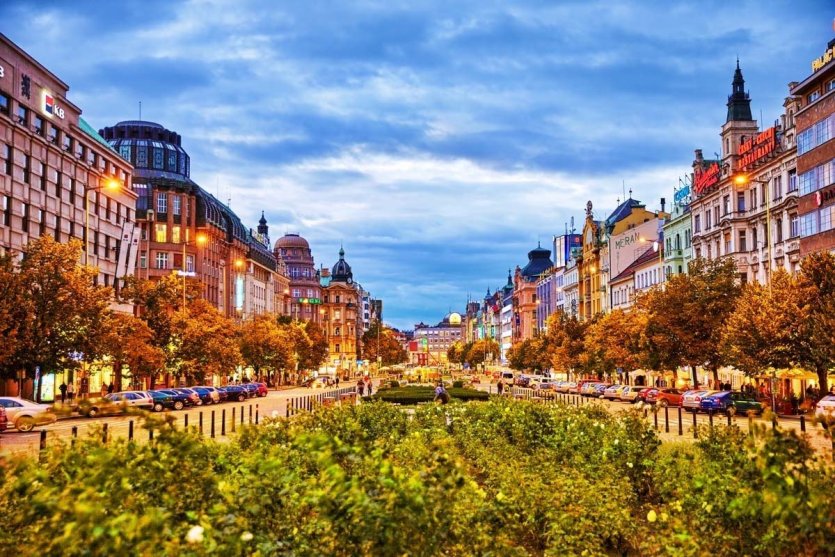
With its boutiques, grand hotels, theaters, cafés and nightclubs, Wenceslas Square is like the Champs-Élysées, bustling with life day and night. The statue of King Wenceslas sits at the center of the square, which is bordered by attractive Art Deco and Art Nouveau buildings. In addition to its tourist attractions, the site has played important roles in the city's history: it was here that the Republic was proclaimed in 1918, Ian Palach immolated himself in 1969 and the first demonstrations of the Velvet Revolution began on its esplanade..
10. The John Lennon wall
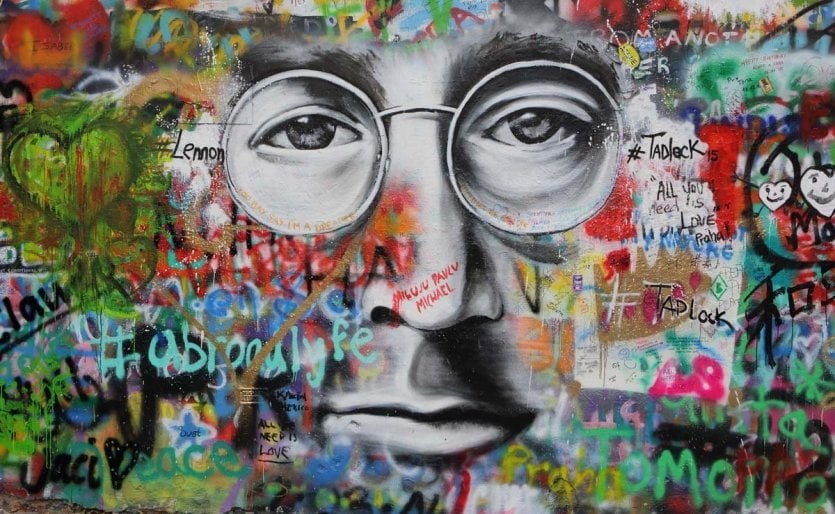
The French Embassy faces a rather unusual wall, dedicated entirely to John Lennon. Although he never came to Prague, the artist was a symbol of freedom and peace for Czech students during the Communist regime. So, on his death in 1980, the first graffiti was painted on this wall, followed by several others, and although they have been erased many times, they are constantly reinvented. For almost 40 years, the John Lennon Wall has continued to fulfil its vocation as a space for free expression and a symbolic site for street art.
11. Old Town Square
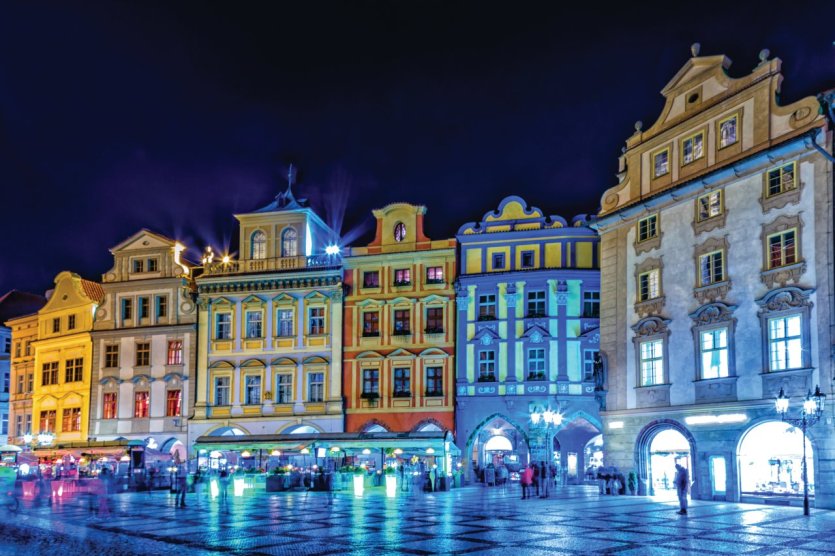
One of the 10 most beautiful squares in Europe, Old Town Square is sure to be your first introduction to Prague. It's a veritable giant stage, constantly bustling with tourists and packed with stalls. Framed by the towers of the Tyn church and the astronomical clock next to the Town Hall, all three seem to watch over the statue of the reformer Jan Hus at the center of the square. The houses lining the square are not to be outdone, boasting pretty frescoes and Baroque or Renaissance facades such as the Stone Lamb (no. 17, Renaissance portal), the Golden Unicorn (no. 20, Gothic portal), the White Unicorn (no. 15, Venetian gables), the Stone Bell (no. 13, Gothic) or the Goltz-Kinsky Palace, a rococo palace where Kafka's father once owned a store. As you cross the Old Town Square, you'll see a long metal band: it represents the Prague meridian, which was used to tell the time in the Middle Ages. As for the huge sculpted ensemble, it's the Jan Hus memorial to the reformer burnt in 1415. Designed by Ladislav Šaloun, it was built between 1903 and 1915, the year of its inauguration and the 500th anniversary of Hus' death.
12. The Music Museum
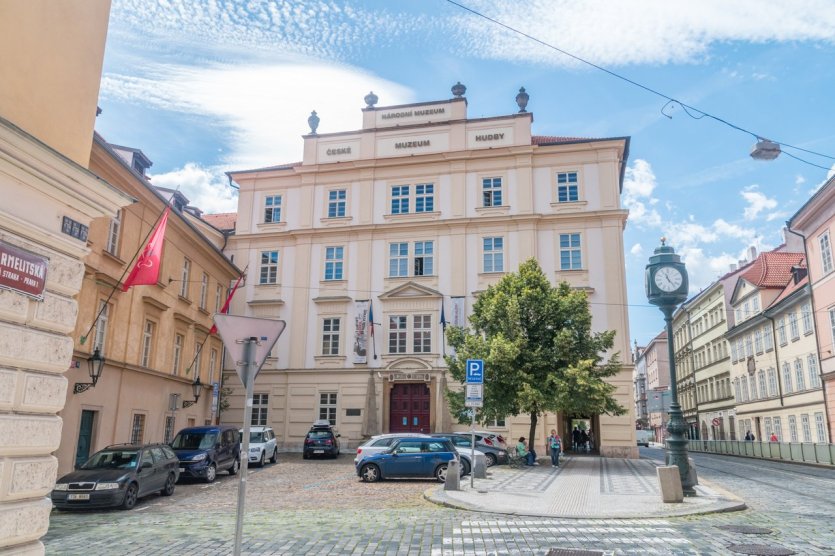
Music is an inseparable part of Prague's cultural and social life, and the extraordinary museum dedicated to it in the Malá Strana district will be a fascinating visit even for neophytes. It's a modern, highly interactive museum, where you'll have the privilege of discovering, among the 3,000 or so instruments on display, one-of-a-kind and even totally experimental pieces, created by the finest craftsmen in the Czech Republic, and indeed the rest of the world. With the help of headphones, you can also listen to the sounds they produce (or used to produce), and appreciate the differences between one piece of music and another, depending on the instrument with which it is played. Concerts are given regularly throughout the season, benefiting from the building's excellent acoustics.
13. The Museum of Communism
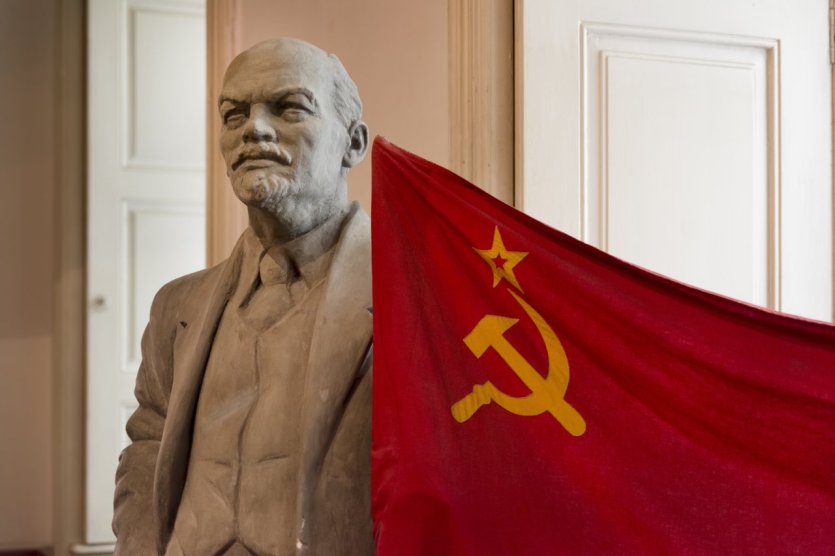
The Museum of Communism not only offers a collection of "period objects", it also provides an opportunity to take a critical look at present-day Czech society in the light of its recent, traumatic past. The exhibition revolves around three themes: dreams, reality and the Communist nightmare. Before starting your visit, make sure you linger in the entrance hall of the Savarin Palace, which houses the museum. It was built in 1745, in the grand rococo style, and features beautiful frescoes on its walls and ceilings. The museum itself consists of a number of small rooms where period objects and mannequins have been used to recreate the worlds of the Soviet era.
Take advantage of our partner's special rates and click here to book your ticket to the Museum of Communism!
14. The Klementinum
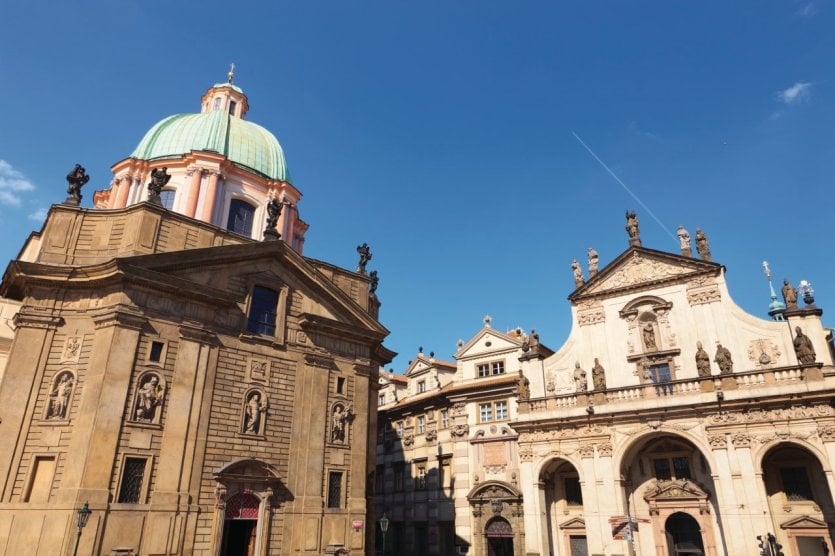
At the end of Karlova Street, just before you reach Charles Bridge, you'll find the Klementinum, Prague's second-largest architectural ensemble after the Castle. Only a small part of it is open to the public - fortunately, the most fascinating. You'll discover the magnificent Baroque library founded by Charles University in 1800, housing almost three million volumes that make up the National Library's collection. Next, you can climb up to the Astronomical Tower, where numerous astronomical instruments from different eras are on display, and from its summit you can enjoy a panoramic view of Prague, with the Charles Bridge in the foreground. Of the three churches in the complex, St. Saviour's (Sv. Salvátora) is the closest to the Charles Bridge. Its façade was decorated by the workshop of Jan Jiří Bendl, one of the most renowned Czech Baroque sculptors. It was built in Renaissance style in 1578.
Click here to book yourguided tour of the Klementinum Library and Astronomical Tower
15. The Municipal House
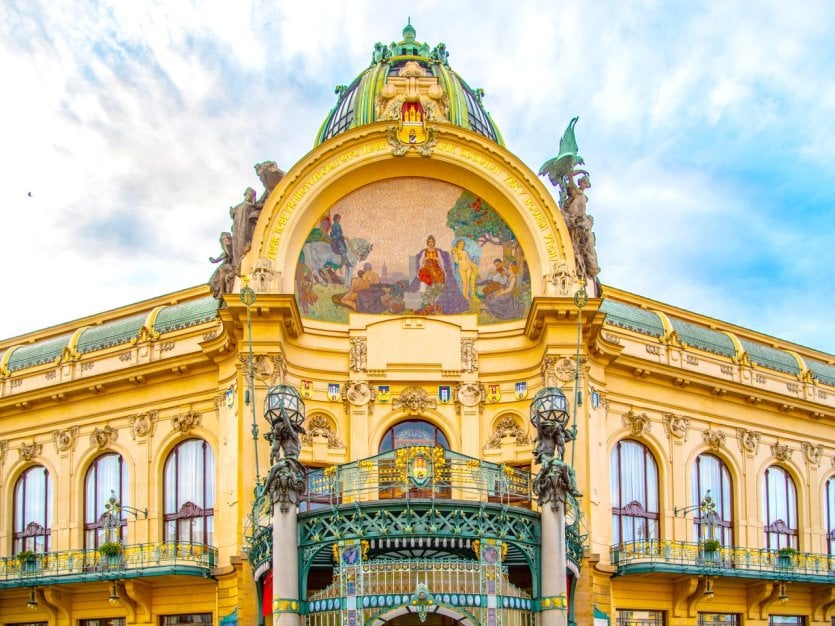
This building was erected between 1906 and 1911, on the site of the 14th-centuryroyal court. That's why the Royal Way began here, as the crowned heads would set off from Prašná brána (The Powder Tower) on their journeys through the city on their way to Prague Castle. It's a monumental building, a pure product of the Secession movement, decorated by the greatest Czech artists of the period, including Mucha, Aleš, Preisler, Švabinský, Šaloun and many others. The town hall is entered via a rotunda, from which two large wings extend. A great deal of attention is paid to detail, from the design of the curtains and sconces to the door handles. The building, sometimes used for congresses and conferences, is above all home to the Czech Philharmonic. The place also has great historical significance: it was here that the Czechoslovak Republic was proclaimed on October 28, 1918. It was also here, in November 1989, that representatives of the Communist government met for the first time with the opponents of the Civic Forum, headed by Václav Havel.
16. The Kafka Museum
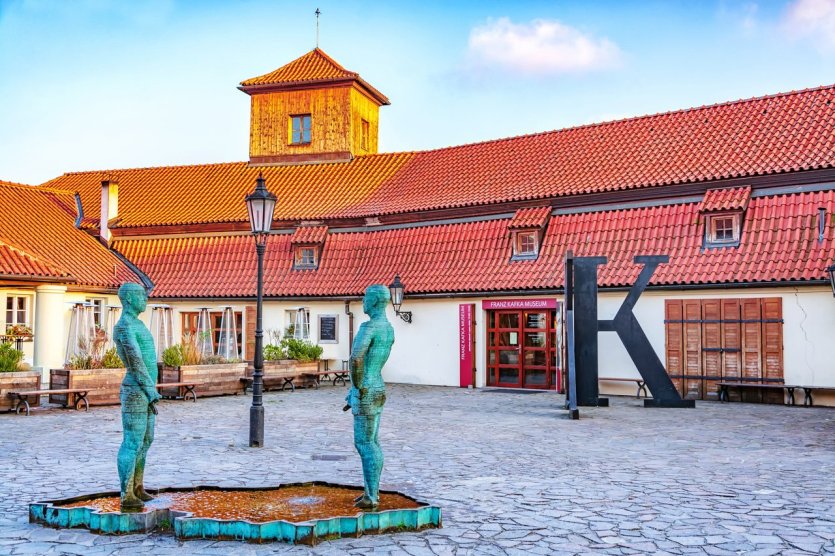
The Kafka Museum explores the work of the famous Prague writer and his relationship with the city. After a brief but comprehensive biography, a section is devoted to his seminal work, Letter to the Father (1919), illuminated by the many testimonies and writings collected from friends and family at the time. A way to better understand Kafka's demons and to gain a deeper insight into his written work. We then follow the Prague writer through the city and the various houses he lived in, starting of course with the house where he was born, on Old Town Square. This is followed by numerous period photographs of the Jewish quarter, which avid readers will try to place in his novels. The last part is resolutely anguished, in the image of Kafka's short stories about the aberrations of bureaucracy, as in The Trial.
Click here to book your tickets for the Franz Kafka Museum.
17. The Vltava
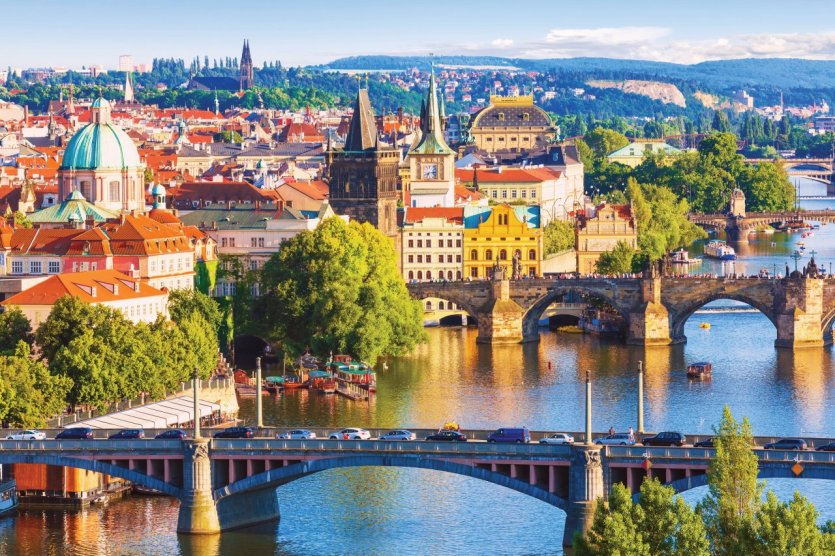
Inseparable from Prague, a stroll along the banks of the Vltava offers sublime views of Prague, the castle, the historic facades animated by the flow of streetcars... On foot or, more romantically, by boat.. Stroll along the Masaryk Bridge or Kampa Island, changing banks and city views at every bridge. And if you're tired of following in the footsteps of the thousands of tourists ahead of you, why not take a trip to the Vltava islands? Slovanský ostrov ("Slavic Island"), also known as Zofin (the name of Emperor Franz Joseph's mother), is a forgotten, green and peaceful place. The island's popularity has waned somewhat nowadays, but balls are still held here with great success. During the day, you can hire a boat and discover Prague along its majestic river. Nearby, another island where you can relax and, for example, have a picnic: Střelecký ostrov, also known as Little Venice, will delight the whole family, and confirm Prague as an ideal destination for traveling with children in Europe.
Click here to book your eveningcruise on the Vltava River , where you'll be able to contemplate the city's emblematic monuments, illuminated at nightfall from the water: enough to create unforgettable memories!
Where to stay in Prague?
Prague has an abundance of accommodation to suit all budgets. Recent boutique hotels abound in the historic center. For those with small piggy banks, the city offers dozens of excellent youth hostels to suit all tastes. On the other side of the city, large prestigious palaces line the Vltava or the narrow streets of Malá Strana, offering luxurious services that are rarely equalled.... If you're planning a longer stay, try to book in a slightly more out-of-the-way district such as Vinohrady, Nové Město or Žižkov.
- The cheapest: OLD PRAGUE HOSTEL
Close to the Old Town, this hostel offers very competitive rates. Book your stay here!
- The most luxurious: MANDARIN ORIENTAL HOTEL SPA
This establishment is as highly recommended for its luxurious rooms as for its spa in a chapel. If you're tempted, click here for rates and availability.
- The most original: the ONE ROOM HOTEL
A hotel that will propel you 70 meters into the air to enjoy an extraordinary view of the capital, and which you can book in just a few clicks right here!
What to see in Prague in 1 day?
Let's start with Old Town Square. Enjoy a coffee surrounded by facades, bell towers and the astronomical clock, then head for the Jewish cemetery. Visit at least the Vieille Nouvelle synagogue before returning to the Old Town. The best place to start is the Royal Way, which takes you all the way to Prague Castle. Start at the Municipal House. Follow Rue Celetna, lined with pretty boutiques, mainly crystal shops. Then join the Town Hall and its astronomical clock. Don't miss the figurine show during the time change. Continue along Karlova Street towards Charles Bridge. A charming visit all year round and one of the best destinations to visit in December 2023, January 2024 or February 2024.
What to do in Prague in 3 days
Day 1: Stroll through the Old Town. Start at Republic Square and the imposing Municipal House. Nearby, the Poudrière tower offers a superb view. A stroll along pedestrian Rue Celetna, with its sumptuous Baroque facades, leads to Place de la Vieille Ville. Don't miss the Tyn church and astronomical clock. Follow the Royal Alley to the Castle via Charles Bridge and Malá Strana. Passing 15 Karlova is well worth the detour. Once over the Charles Bridge, you enter Malá Strana. Continue along the Royal Alley via Mostecka and Nerudova streets to the Castle. A complete tour of the castle should take around three to four hours.
Day 2. Visit the Jewish Quarter (Josefov), its synagogues and cemetery. Tickets can be purchased next to the Old-New Synagogue on Parižská. Then it's on to Letna, a typically Czech district. Walk along Parižská, Prague's most elegant and noble street, cross the Čehuv bridge and climb the stairs to the Letna metronome. The panorama is superb. This is a popular part of Prague, off the beaten track but only 10 minutes from the Old Town.
Day 3. Karlštejn Castle is one of the country's most beautiful castles and one of the Czech Republic's 10 must-sees. It's half an hour by train from the center of Prague. Then it's off to shop in the New Town around Wenceslas Square.
What unusual visits can you make in Prague?
In the top 10 of unusual museums, the Museum of Alchemy is a visit not to be missed. Nestled in one of the city's oldest houses dating back to the 15th century, it's a place full of legends in a simply fantastic universe. Also worth seeing: the world's only cubist lamp post, the Výtopna café-restaurant dedicated entirely to model trains, Prague's smallest house (2.25 m wide!), etc.
What to do in Prague at night
The Czech capital is a festive city, and one of the best destinations for an EVG in Europe! If you're simply looking for a quiet place to have a drink, Prague is full of small tearooms and literary cafés. If you want to listen to music in a young, funky atmosphere: the Roxy (Old Town), the Akropolis (Žižkov) or the Cross Club (Holešovice). For classical music, the Smetana Hall at the Municipal House or the Rudolfinum are a must. Discotheques and dance bars are also plentiful in the city center, with the largest four-storey discotheque in Central Europe at the entrance to the Charles Bridge. The most famous, but also the one that falls into all the clichés of the genre, is the Duplex. Last but not least, we'd be remiss if we didn't mention the cabarets that are omnipresent in Prague, definitely one of the 10 best cities in Europe for partying.


